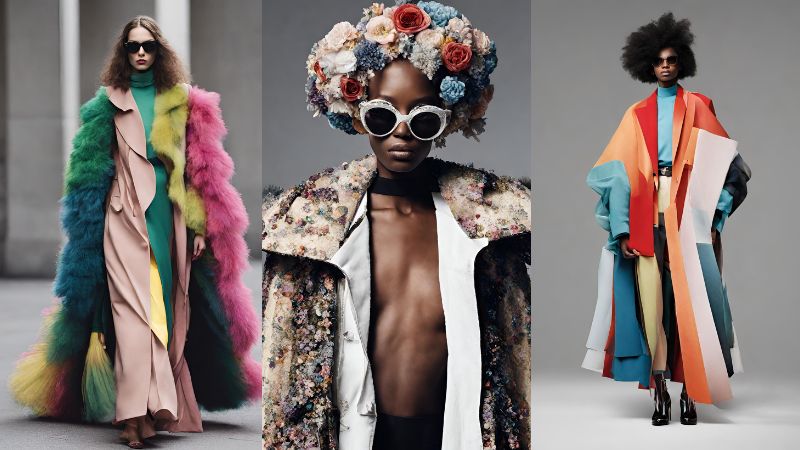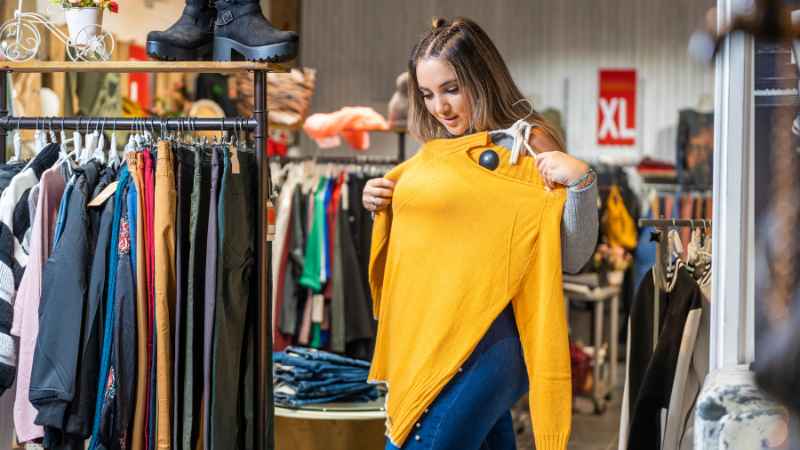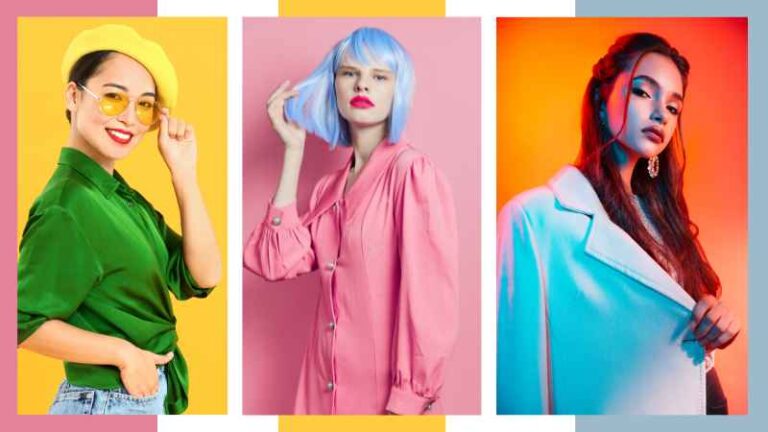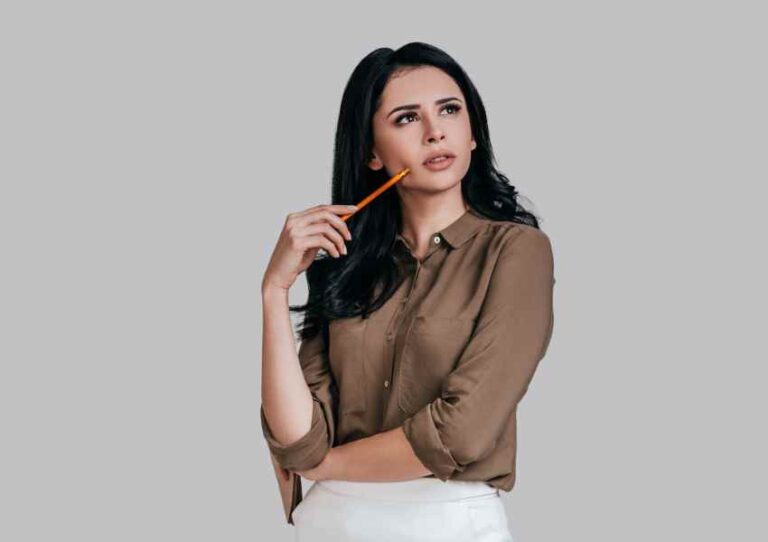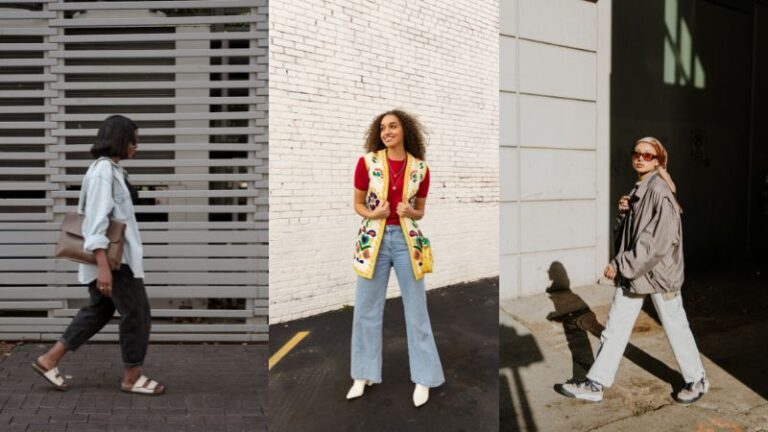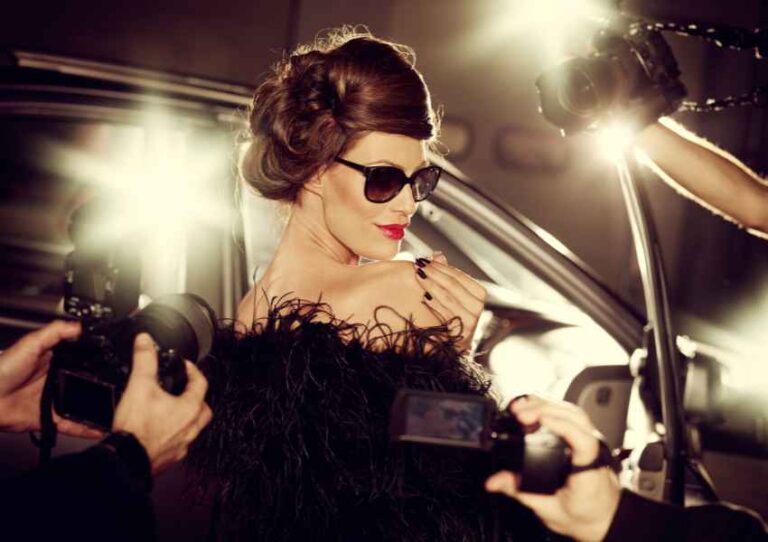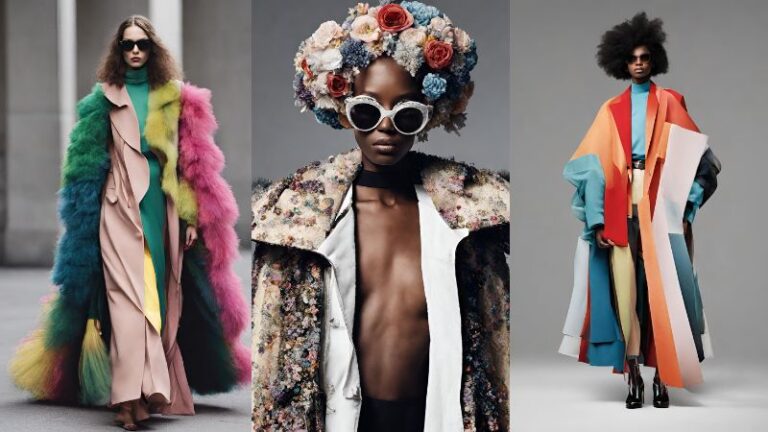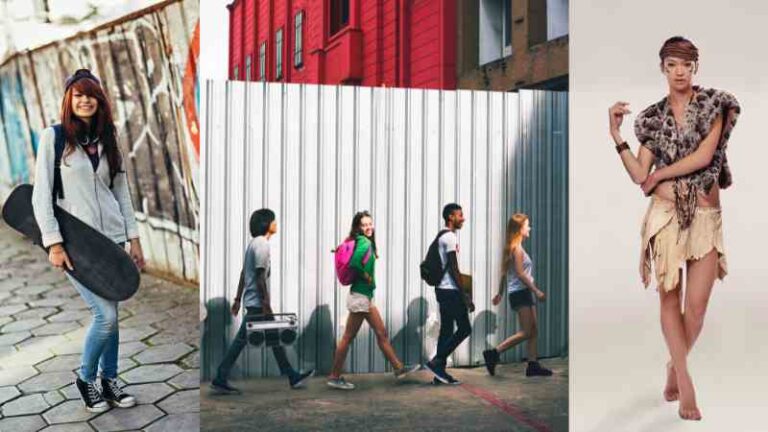Body positivity refers to the social movement advocating for the acceptance and appreciation of all body types, regardless of societal norms or beauty standards. Inclusivity in fashion extends this concept to the industry, emphasizing the importance of representing diverse bodies in clothing, advertisements, and media.
Exploring the history of body representation in fashion reveals a long-standing adherence to narrow beauty standards. Traditionally, the industry has favored a limited range of body types, excluding many individuals from feeling seen and accepted.
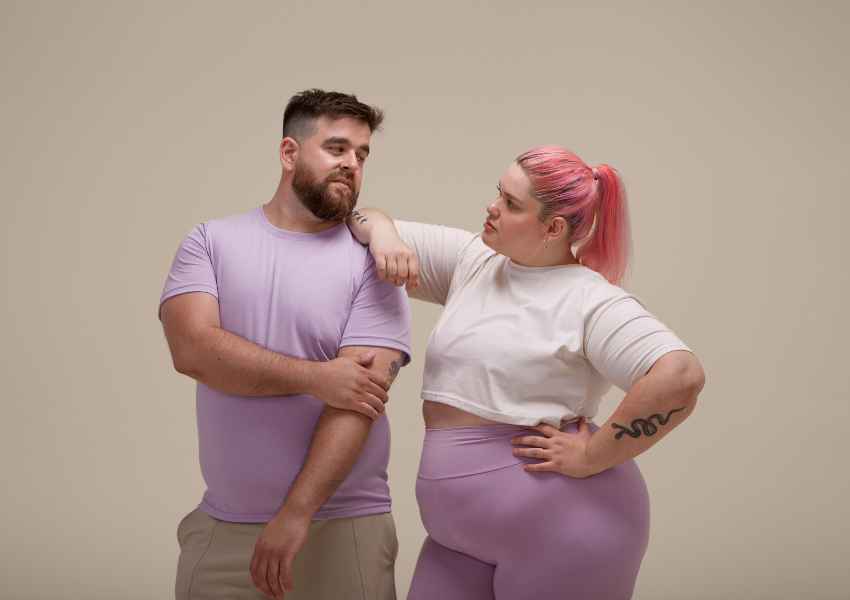
The conversation around body positivity and inclusivity in fashion is more crucial than ever. In a rapidly evolving cultural landscape, there is a growing demand for representation and acceptance of diverse bodies. This discussion transcends fashion; it’s a powerful social movement with the potential to redefine societal norms.
This post will delve into the evolution of fashion standards, examining historical perspectives, the role of media, and key influencers. It will also explore the practical implications of the body positivity and inclusivity movement in the fashion industry and how individuals can contribute to and benefit from this transformative cultural shift.
The Evolution of Fashion Standards
Historical Perspective on Beauty Standards-To understand the current state of body representation in fashion, it’s essential to trace the historical trajectory of beauty standards. From ancient civilizations to the present day, beauty ideals have undergone significant transformations, often influenced by cultural, social, and economic factors.
Shift from Traditional to Diverse Beauty Norms in Fashion
The paradigm shift from conventional beauty norms to embracing diversity in fashion is a noteworthy progression. This section will explore pivotal moments when the industry started challenging and breaking away from established standards, welcoming a broader spectrum of body shapes, sizes, and identities.
Role of Media and Popular Culture in Shaping Perceptions
Media plays a pivotal role in shaping societal perceptions of beauty. This section will scrutinize the influence of fashion magazines, movies, and advertising on perpetuating or challenging traditional beauty norms. It will highlight instances where media has contributed to the evolution of inclusive fashion standards.
Key Figures and Moments that Influenced Change
Examining the individuals and moments that have played a pivotal role in reshaping fashion standards is crucial. From influential designers to trailblazing models, this section will spotlight key figures and moments that have driven positive change in the industry, paving the way for a more inclusive future.
Understanding body positivity
Body Positivity is a movement that advocates for the acceptance of all bodies, regardless of size, shape, skin tone, gender, or physical abilities. It challenges societal norms and strives to promote self-love and body confidence. The core principles of body positivity include recognizing the beauty in diversity, challenging how society views the body, and promoting the acceptance of all bodies without judgment.
Difference between Body Positivity and Body Neutrality
While body positivity focuses on celebrating bodies and finding beauty in all forms, body neutrality takes a different approach. Body neutrality aims for a state of acceptance of one’s body without necessarily celebrating or denigrating it. It emphasizes being at peace with one’s body, focusing more on what the body can do than how it looks.
Psychological Impacts of Body Positivity
The psychological impacts of body positivity are significant. Embracing this movement can lead to improved mental health, increased self-esteem, and reduced impacts of societal pressure on body image. It also contributes to diminishing the stigma around mental health discussions, particularly those related to body image issues.
Criticisms and Challenges of the Movement
Despite its positive intentions, body positivity faces criticism and challenges. Some argue that it has been co-opted by commercial interests, diluting its original purpose. Others express concern that it may inadvertently encourage unhealthy lifestyles. Navigating these challenges is essential for maintaining the integrity and effectiveness of the movement.
Inclusivity in Fashion: More than Size
Inclusivity in Terms of Size, Race, Gender, and Ability
Inclusivity in fashion goes beyond size; it’s about embracing all aspects of diversity. This means including a range of races, genders, and abilities in fashion representation. It’s about creating designs and marketing strategies that reflect and celebrate the diversity of the human experience.
Case Studies of Inclusive Fashion Brands
Many brands are now leading the way in inclusivity. Brands like Fenty by Rihanna, for example, have made headlines for their inclusive sizing and diverse representation in campaigns. Another notable example is Universal Standard, which offers an extensive range of sizes and focuses on high quality.
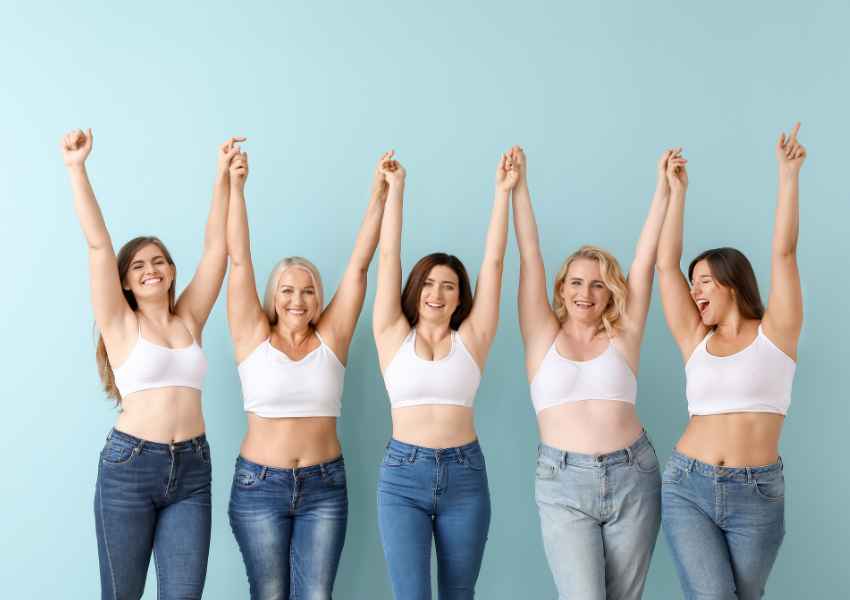
Current Trends in Inclusive Fashion
The fashion industry has seen a significant shift towards inclusivity, embracing a diverse range of body types, skin colors, and gender expressions. This trend is evident in the increasing variety of sizes available, the use of diverse models in fashion shows and campaigns, and the design of gender-neutral and adaptive clothing lines. Brands are recognizing the importance of representing the real, diverse audience that consumes their products.
Corporate Responsibility and Ethical Considerations
Corporate responsibility in fashion extends to ensuring that all processes, from design to marketing, are inclusive and ethical. This includes advocating for fair labor practices, promoting body positivity, and avoiding cultural appropriation. Ethical considerations also involve transparency about sourcing and production processes, ensuring that the fashion industry is not only inclusive in its representation but also in its operations.
The Impact of Sustainable and Ethical Fashion on Inclusivity
Sustainable and ethical fashion plays a crucial role in promoting inclusivity. By adopting eco-friendly practices and ensuring fair labor conditions, brands set a standard for respecting not only the environment but also the diverse workforce involved in the production process. Sustainable fashion often goes hand in hand with inclusivity, as both movements share a common goal of creating a more equitable and conscientious world.
Interviews or Quotes from Industry Experts and Designers
“Inclusivity isn’t just a trend; it’s the future of fashion,” says acclaimed designer Stella McCartney. Another industry expert, Edward Enninful, Editor-in-Chief of British Vogue, notes, “Fashion has the power to reflect and shape society, and inclusivity should be at its core.”
Changing Consumer Expectations and Demands
Today’s consumers are more aware and demanding than ever. They expect fashion brands to be inclusive in their sizing, advertising, and overall brand ethos. Social media and online platforms have given consumers a voice to demand these changes, leading to a more democratic and inclusive fashion industry.
The Economic Impact of Inclusive Fashion
Inclusive fashion is not just a moral imperative; it’s a business one. The plus-size clothing market alone is valued at over $178 billion, demonstrating the economic power of catering to a diverse consumer base. Brands that fail to adapt to these inclusivity standards risk losing relevance and revenue in an increasingly socially conscious marketplace.
Case Studies of Successful Inclusive Marketing Campaigns
Nike’s “Plus Size Mannequins” in London flagship stores and Dove’s “Real Beauty” campaign are prime examples of successful inclusive marketing. These campaigns have not only garnered positive public reception but also significantly boosted brand image and sales, proving that inclusivity can be both a socially and economically rewarding strategy.
How Consumers Can Support and Demand Inclusivity
Consumers can promote inclusivity by supporting brands that align with these values, using social media to voice their demands and preferences, and choosing to spend their money on products that represent and celebrate diversity. By being conscious and vocal, consumers hold the power to shape the industry’s future.
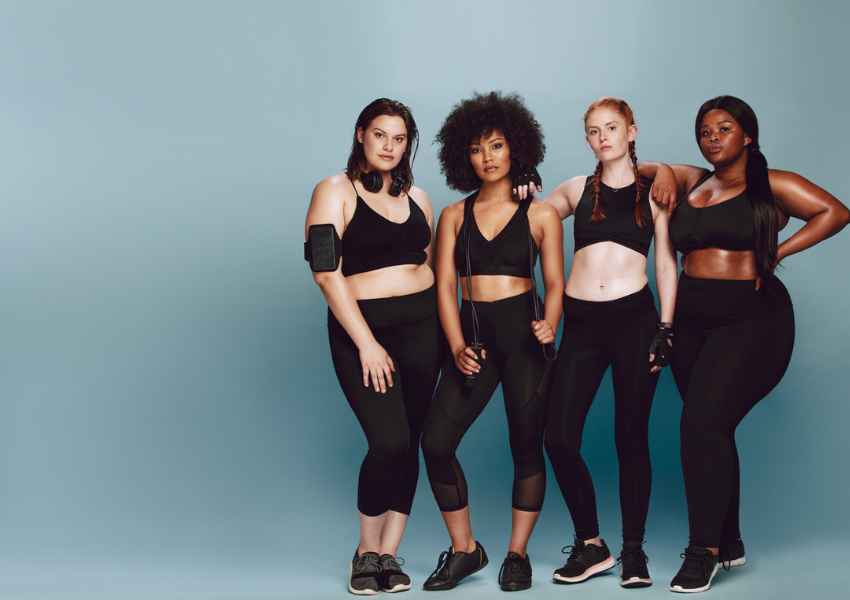
Connection between Fashion, Body Image, and Mental Health
The relationship between fashion, body image, and mental health is complex and significant. The fashion industry often sets unrealistic beauty standards, which can lead to negative body image and a range of mental health issues, including depression, anxiety, and low self-esteem. Conversely, inclusive and body-positive fashion can have a positive impact, promoting self-acceptance and psychological well-being.
Role of Social Media: Pros and Cons
Social media plays a dual role in the context of body positivity. On the positive side, it offers a platform for body-positive advocates to share diverse and realistic body images, challenging mainstream beauty standards. However, it can also be a source of comparison and unrealistic ideals, exacerbating body dissatisfaction. It’s important for users to curate their social media feeds to include positive and diverse body representations.
Strategies for Maintaining a Positive Body Image
Maintaining a positive body image in today’s culture requires conscious effort. Strategies include practicing self-compassion, engaging in positive self-talk, appreciating the body for its functionality rather than just its appearance, and surrounding oneself with positive influences. Additionally, consuming media critically and engaging in activities that boost self-esteem can be beneficial.
Resources and Support for Body Positivity and Mental Health
Various resources are available for individuals seeking support in their journey towards body positivity and better mental health. This includes counseling services, body-positive social media accounts and websites, support groups, and educational materials that focus on self-love and acceptance.
Challenges and Criticisms in the Movement
The commercialization of the body positivity movement is a growing concern. As the concept becomes mainstream, some fear that its original intent and message are being diluted for profit. Brands may claim to support body positivity but fail to incorporate its principles meaningfully, reducing it to a marketing gimmick.
Inclusivity vs. Tokenism in Fashion Campaigns
There’s a fine line between true inclusivity and tokenism. Some fashion campaigns include diverse models as a token gesture rather than a commitment to representation. Authentic inclusivity requires ongoing and consistent representation of a variety of body types, races, genders, and abilities.
Addressing Issues of Accessibility and Affordability
Accessibility and affordability are significant barriers in the fashion industry. Often, inclusive sizing comes with a higher price tag, making it inaccessible to many. There’s a need for affordable, inclusive fashion options to ensure that everyone, regardless of their financial situation, has access to clothing that makes them feel confident and represented.
Ongoing Challenges in Representing Diverse Bodies
Despite progress, there are ongoing challenges in accurately and fairly representing diverse bodies in fashion. This includes overcoming deep-rooted industry standards, societal prejudices, and logistical challenges such as sizing standardization. The industry must continue to evolve to genuinely embrace and celebrate the diversity of the human form.
Predictions for the Future of Fashion Inclusivity
The future of fashion inclusivity is poised for continued growth. Predictions include an increased emphasis on sustainable and inclusive practices, a rise in demand for customization, and a shift towards virtual and augmented reality experiences that cater to diverse audiences.
Emerging Designers and Brands Leading the Way
Emerging designers and brands are at the forefront of the inclusivity movement. Names like Becca McCharen-Tran of Chromat and Telfar Clemens are gaining recognition for challenging traditional norms and creating truly inclusive fashion. These pioneers are setting the stage for a new era in the industry.
The Role of Technology and Innovation in Promoting Inclusivity
Technology and innovation are integral to promoting inclusivity in fashion. From 3D printing to AI-driven sizing solutions, technological advancements are breaking down barriers and allowing for greater personalization. Virtual fitting rooms and apps that showcase diverse models are becoming powerful tools in the fight for inclusivity.
How Readers Can Contribute to a More Inclusive Fashion Culture
Individuals can contribute to a more inclusive fashion culture in various ways. Supporting brands that prioritize inclusivity, engaging in discussions around representation, and using social media to amplify diverse voices are all impactful actions. By being conscious consumers and advocates, readers play a vital role in shaping the future of the fashion industry.
Spotlight on Inclusive Fashion Brands and Their Journey
In this section, we’ll spotlight brands like Aerie and Savage X Fenty that have successfully embraced inclusivity. We’ll delve into their journey, exploring the challenges they faced, the strategies they employed, and the impact they’ve had on the industry.
Stories of Individuals Who Have Impacted the Body Positivity Movement
Highlighting individuals who have made significant contributions to the body positivity movement is crucial. Personal stories of activists, models, and everyday people who have challenged norms and advocated for acceptance will inspire and demonstrate the power of individual voices.
Analyzing Successful Inclusive Fashion Campaigns and Their Impact
Examining successful campaigns, such as Dove’s Real Beauty and Nike’s Pro Hijab, provides valuable insights. We’ll analyze the strategies employed, the public reception, and the lasting impact these campaigns have had on changing perceptions and fostering inclusivity.

Lessons Learned from Failed Attempts at Inclusivity in Fashion
Not every attempt at inclusivity is successful. Exploring failed attempts allows us to learn valuable lessons. Whether due to lack of authenticity, poor execution, or other factors, understanding these failures is essential for the industry to evolve and avoid repeating mistakes.
Exploring How Body Positivity Intersects with Race, Gender, and Sexuality
Body positivity is inherently intertwined with various aspects of identity, including race, gender, and sexuality. Exploring this intersectionality is crucial for understanding how individuals experience and navigate body positivity differently based on their unique intersections of identity.
The Importance of Acknowledging Diverse Experiences in the Movement
Acknowledge diverse experiences within the body positivity movement is essential. Different communities face distinct challenges, and recognizing these variations is pivotal for creating a more inclusive movement. It’s not a one-size-fits-all concept; rather, it should be tailored to address the unique struggles and triumphs of various identities.
The Role of Intersectionality in Creating Truly Inclusive Fashion
To achieve truly inclusive fashion, intersectionality must be at the forefront of the design and marketing process. This involves recognizing and celebrating the beauty of all body types, sizes, ethnicities, genders, and abilities. The industry needs to move beyond token gestures and embrace a holistic understanding of diversity.
Profiles of Activists and Influencers Who Champion Intersectional Body Positivity
Highlighting the work of activists and influencers who champion intersectional body positivity is essential. Individuals like Munroe Bergdorf and Jari Jones are making significant contributions by advocating for inclusivity across various dimensions. Their profiles serve as inspirations and amplify the importance of intersectionality in the body positivity movement.
How to Cultivate a Body-Positive Mindset
Cultivating a body-positive mindset involves reframing negative thoughts, practicing self-love, and focusing on the functionality and health of the body rather than its appearance. Techniques such as positive affirmations, mindfulness, and gratitude can contribute to a healthier relationship with one’s body.
Tips for Finding and Supporting Inclusive Fashion Brands
Discovering and supporting inclusive fashion brands can be empowering. Tips for navigating the market include researching brands’ commitment to diversity, exploring sizing options, and seeking out those that align with personal values. By actively supporting inclusive brands, individuals contribute to the demand for diverse representation.
Advice for Dealing with Body Shaming and Negative Influences
Dealing with body shaming and negative influences requires resilience and self-compassion. Practical advice may include setting boundaries, surrounding oneself with positive influences, and seeking support when needed. Developing coping mechanisms and focusing on self-care can aid in navigating external pressures.
Ways to Promote Body Positivity in Everyday Life
Promoting body positivity in everyday life involves both personal actions and broader advocacy. Encouraging open conversations about body image, challenging harmful societal norms, and supporting inclusivity in various spheres contribute to creating a more body-positive culture for everyone.
Interactive Elements (Polls, Quizzes) on Body Positivity Perceptions
Incorporating interactive elements like polls and quizzes can actively engage readers and provide valuable insights into their perceptions of body positivity. These tools not only make the content more engaging but also help readers reflect on their own attitudes and beliefs regarding body image and inclusivity.
Encouraging Reader Stories and Experiences with Inclusive Fashion
Inviting readers to share their personal stories and experiences with inclusive fashion fosters a sense of community and mutual support. It allows individuals to connect over shared experiences and challenges, providing a platform for diverse voices to be heard and celebrated.
Collaborative Section for Sharing Resources and Tips
Creating a collaborative section where readers can share resources, tips, and advice related to body positivity and inclusive fashion encourages community engagement. This space can become a valuable repository of crowd-sourced information, from recommended brands to personal strategies for maintaining a positive body image.
Inviting Guest Bloggers or Experts to Contribute
Inviting guest bloggers or experts to contribute to the blog can provide fresh perspectives and expert insights. This could include fashion designers, psychologists, body positivity activists, or individuals with unique experiences that align with the themes of body positivity and inclusivity.
Conclusion
The conclusion will recap the key points discussed throughout the post, including the evolution of fashion standards, the role of the fashion industry in inclusivity, consumer power, and the intersectionality of body positivity. This summary will reinforce the main themes and takeaways for the reader.
Emphasize the concept that the journey towards body positivity and inclusivity in fashion is an ongoing process. Acknowledge the progress made while also highlighting the work that still needs to be done to achieve truly inclusive fashion standards.
Offer final thoughts that inspire and motivate readers to continue the conversation and engage with the topic of body positivity. Encourage them to be active participants in promoting change, both in their personal lives and within the broader fashion community.

